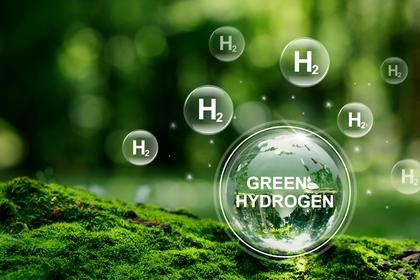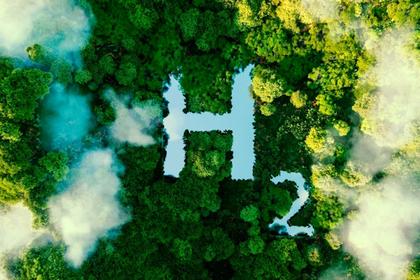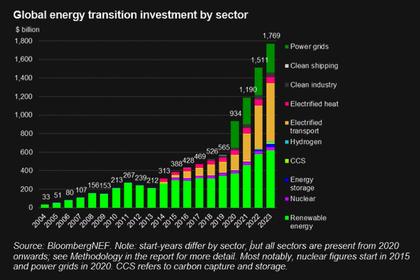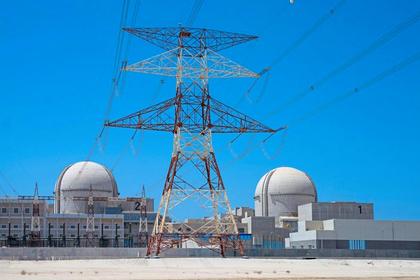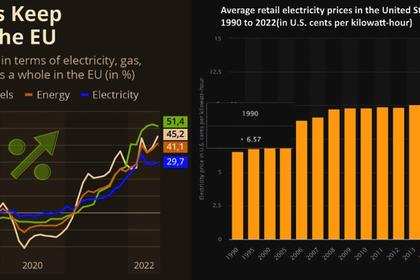
GLOBAL CLEAN ENERGY TRANSITION
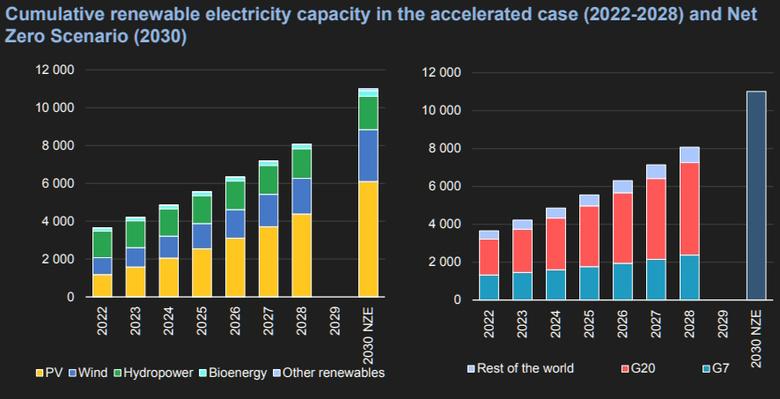
By HUGO STAPPERS Global Sales Leader - Energy Portfolio Management, Hitachi Energy
ENERGYCENTRAL - Apr 24, 2024 - The electricity market is transitioning to a higher share of renewable energy sources. We are witnessing closures of coal generation plants, the addition of energy storage solutions, increases in distributed energy resources (DER), and substantial investments for expanding the transmission network to accommodate all this. A journey towards a power system where at times electricity is coming for a 100% from renewable sources and not from fossil fuel power stations. To realize this 100% instantaneous renewable energy commitment requires not just additional renewable generation but also the upgrade of tools and processes to be ready for managing the challenges of higher penetrations of variable renewable energy, like wind and solar.
Planning
Decarbonization is synonymous with the energy transition. It drives the shift from a central architecture, where vertically integrated utilities generate, supply, and distribute energy from centralized power stations to their customers, to decentralized energy system where this generation is replaced by distributed renewable energy sources, battery storage and more localized generation at homes and businesses. This pushes the grid to its limits. Grid operators, regulators and policy makers need to conduct future power system studies to understand emerging issues on the power system, as it moves to uncharted operating conditions, and quantifying gaps in known system requirements for immediate emerging operating conditions.
For starters, long term resource planning and reliability requirements can be achieved with capacity expansion solutions, enabling planners to run scenarios and efficiently assess and develop strategies including evaluation of resource acquisition, emissions compliance and renewable generation targets, all while trying to minimize the incremental system cost over the desired time horizon.
Additionally, new players are entering the power markets, such DERAs, Distributed Energy Resource Aggregators, who pool together small-scale energy resources and act on their owners’ behalf. While more DERs are permitted in the wholesale markets, and can help with price volatility, many markets are only beginning to understand how these DERs fit in the wider energy system and their impact on the grid. Also here, capacity expansion software solutions offer the ability to have a detailed analysis of the impact of these individual proposed and/or permitted DERs from a variety of perspectives (i.e. Utility, Participant, Societal, Rate Payer impact, etc.).
Power system modelling and market simulation provides valuable information on the dynamics of the marketplace by determining the effects of transmission congestion, fuel costs, generator availability, bidding behavior, and load growth on market prices. Asset Modeling software performs a security constrained unit commitment and economic dispatch, recognizing both generation and transmission impacts at the nodal and zonal level.
Managing and optimizing a complex portfolio
Striving for 100% renewable energy across all hours of the day, means having to meet demand with a portfolio that may include solar, wind, hydro, battery storage, and DERs. Adapting to this changing power system, requires a generation portfolio optimization model that helps minimize an extended levelized cost of energy (LCOE).
Depending on the location and available technologies, complexity may be less and fulfillment easier. For example, when hydropower is abundantly available, this can be utilized to tackle the intermittency of wind and solar power and cover shortfalls at specific hours in the day. Similarly, where approaches are possible and technologies available such as DERA (distributed energy resource aggregators), Virtual Power Plants (VPP), or Concentrating Solar Power (CSP) – a technology which captures sunlight using mirrors or lenses to produce heat that drives conventional thermal generators.
Utilizing a Portfolio Optimization software solution allows to plan the optimal operation of a portfolio comprised of the 100% renewable energy base, taking into account the capacity of each technology – solar, wind, hydro, storage – as well as transmission, and create a dispatching model to be considered and executed. Another very important aspect of achieving this balanced portfolio operation is the ability to linking optimal resource investment plan(s) with portfolio operation scenarios. Being able to leverage the combination of software tools, as Hitachi Energy can, for capacity expansion and portfolio optimization provides the integration and ability to roll an expansion plan into various scenarios by taking the expansion plans, based on different types of renewable energy regulations or renewable energy targets, into account to provide optimized portfolio operations.
Each technology and approach available play a role to avoid negative prices and volatility that creates market risk. Flexibility is key, including demand response or flexible electricity consumption, along with resources like batteries to mitigate that risk. Storing some midday solar generation flattens the duck’s curve, and dispatching the stored solar generation in the evening shortens the duck’s neck.
Traceability
Because all power sources are connected to the same electricity network, the power from renewable or non-renewable sources cannot be distinguished. Energy Attribute Certificates (EAC) are used, such as Renewable Energy Certificates (RECs) or Guarantee of Origins (GOO), as evidence that electricity was generated from a renewable source, including the environmental attributes. However, the current systems and policies cannot match the supply of renewable energy with demand for that energy on an hourly basis.
Yet the market is recognizing that to get to fully decarbonized power systems, companies need to transition from buying only certificate-backed energy, towards purchasing 24/7 time-matched carbon free energy (CFE). To bring about a 100% renewable energy commitment, Granular Certificates provide a better way of tracking renewable electricity, the standards of which Hitachi Energy and Hitachi are contributing to develop. It provides a mechanism to ‘tag’ electricity with the time and source of production so consumers can match their consumption with clean energy hour by hour.
A solution to manage granular certificates traces electricity from renewable sources to provide information to electricity customers on the source of their energy—not just on a monthly or yearly basis, but on an hourly basis. 24/7 CFE matching helps to visualize whether indeed the coverage is 100% renewable energy as well as to understand demand.
Achieving 100% instantaneous renewables takes planning, optimization, and traceability to be ready to operate a power system with a high penetration of renewable energy sources, which in turn supports the transition to a net-zero energy system. New tools and digital technologies are required.
---
This thought leadership article was originally shared with Energy Central's Utility Management Community Group. The communities are a place where professionals in the power industry can share, learn and connect in a collaborative environment. Join the Utility Management Community today and learn from others who work in the industry.
-----
Earlier:
